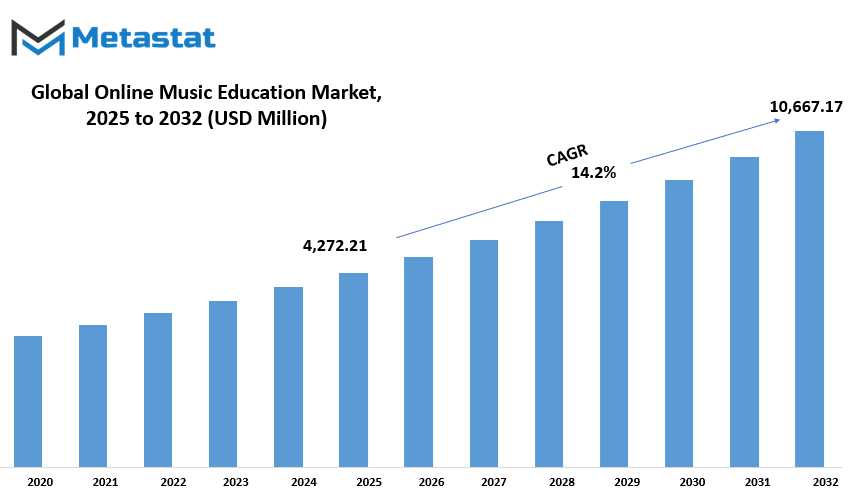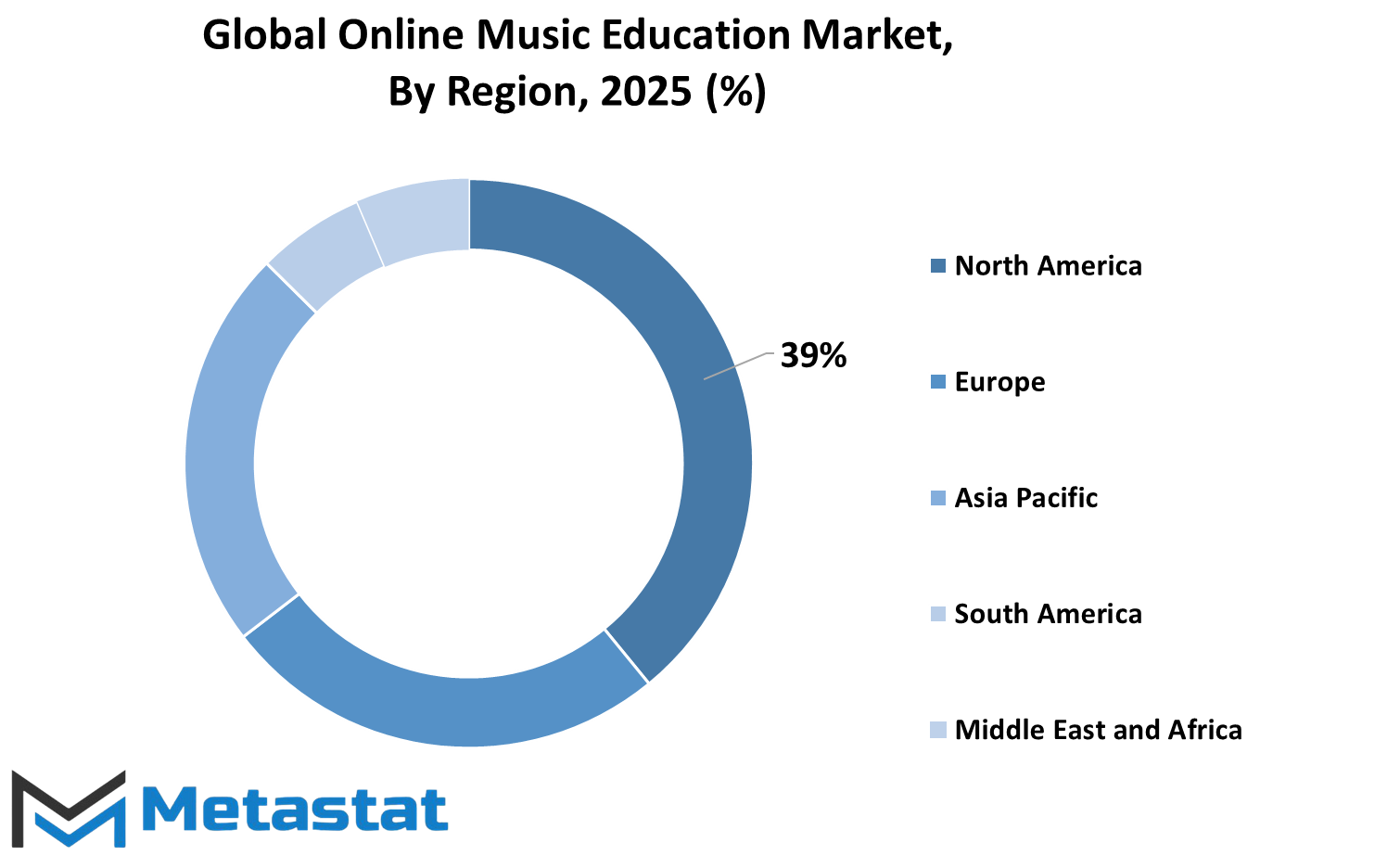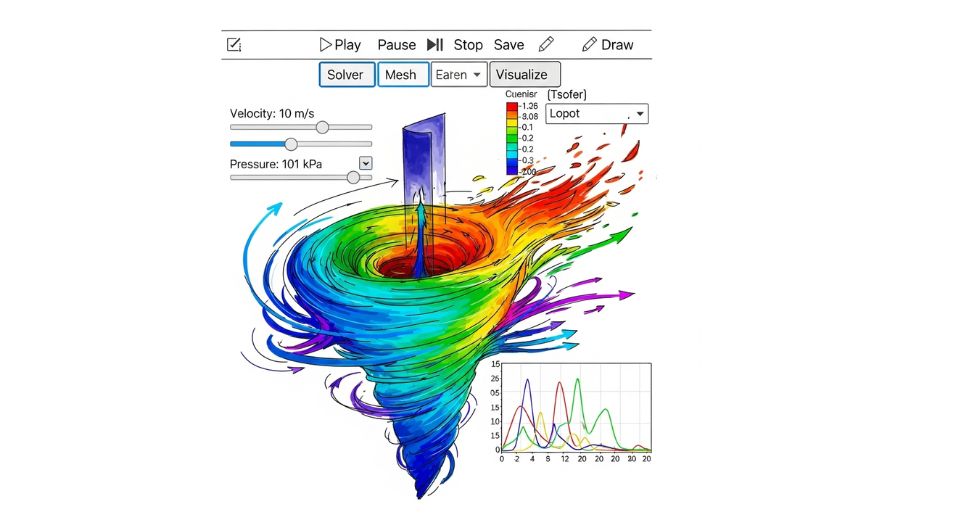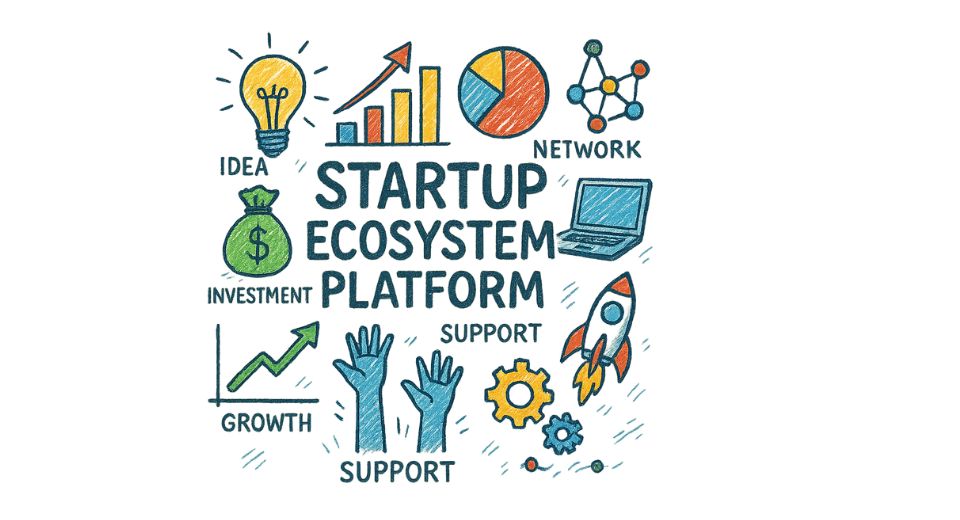MARKET OVERVIEW
In the coming years, the online worldwide music education sector is expected to bring about awe-inspiring changes in the ways music is learned. The transformation of the industry towards the digital space has already made it possible for students and would-be musicians to secure world-class education in the comfort of their homes. This trend will only blossom further, with more and more students opting for flexible self-paced means of learning. Digitization is changing the way teachers and students relate, thus opening a whole new world of possibilities for both.
The astonishing variety of interactive platforms offering specialized music courses is one of the most forward-indicating current trends. The platform will bundle an assortment of tools, including AI-driven personalized learning pathways, virtual teachers, and real-time feedback. With an increased number of musicians worldwide wishing to better their skills, these platforms will become a natural home for music enthusiasts of all ages.
From beginners dotting their i's and crossing their t's to advanced students refining their techniques in specific genres, there will be a wide array of courses for anything. Technology will allow students to interact with teachers from distant corners of the world, bringing with them diverse perspectives and teaching styles.
The Global Online Music Education market will not only mean traditional forms of teaching like reading sheet music or learning instruments; it will also cover music production, sound engineering, and digital composition in the future. With the rapidly changing technology, tools that aid learning and creativity will become more easily available to a broader group of people.
The platforms will use virtual studios, sound libraries, and music composition software, giving their learners the ability to create their own music while acquiring theoretical knowledge. The students will be able to create, mix, and experiment in real-time in a way that combines practical skill-building with the theory they are studying. Meanwhile, social media will continue to shape the landscape of music education.
The students would be able to interact with other learners, share their progress, and work on projects. This online community aspect will promote creativity, collaboration, and networking among musicians who may have never met in person. Students will also have access to live workshops, competitions, and other performances streamed online, thus enhancing their educational experience while being exposed to various aspects of the music industry.
One of the biggest boons of music education online is accessibility. Learning music will not be hindered by inconvenient geography, limited finances, or the clock. In the foreseeable future, it could be possible for an aspiring musician anywhere in the world to take virtual classes taught by a famous musician. Fairness in the music education market will really start coming into play, as further developments will make it more affordable and accessible to interested musicians.
Ater all, online platforms will continue attracting students from all possible walks of life, working towards assuring that learning this art becomes an option to be taken up by all. In much the same way, the Global Online Music Education market is now set to reap unprecedented changes in the near future. With the constant advancement of technology, students are finding more exciting and innovative ways of engaging with music education.
With personalized learning experiences, cutting-edge tools, and a global community of musicians, online music education will become a norm for aspiring musicians across the world. This will begin a new turn in how music is taught, learnt, and shared across the globe.
Global Online Music Education market is estimated to reach $10,667.17 Million by 2032; growing at a CAGR of 14.2% from 2025 to 2032.

GROWTH FACTORS
The Global Online Music Education market has various factors for growing speedily; one example includes increased demand for e-learning and digital education platforms. With the growth of the internet, people worldwide are looking for the new way of learning to play music in a more flexible-available version. Traditional music education methods such as private lessons are usually confined to some factors like vicinity, time, and cost; instead, in addition to these, online platforms help.
Perpetual and expanded accessibility of questions online or offline to those with an internet connection will make learning easily accessible. As the expansion of e-learning continues, demand for online music education has grown increasingly, hence becoming a key driver of the market.
Thousandths other thing that revolutionizes learning is the application of artificial intelligence (A.I) and gamification into music teaching. AI can provide personalized lessons where the lessons adapt to the specific skill levels and speed of one's learning. This will help the learner to learn at their own pace, thus contributing to a more satisfying learning experience.
Likewise, gamification refers to including what is seen in games during the lessons. It makes them more interactive and encouraging, because piquing students' interests in learning by awarding points, levels, or badges in return for progress makes them keep going in their education in music.
Although promises of growth are there, such constraints face the market. One of such challenges is that there are developing regions where fast internet is not made available. However, the real and fast internet is not always present in most parts of the world, so individuals cannot be fully participatory in online music education. Lack of access, therefore, becomes a very serious barrier for students who are willing to learn music through digital platforms.
Another limitation is that traditional methods may not offer a personalized learning experience. The online way offers convenience and flexibility; however, it can never replace individualized teaching efficacy that face-to-face classes can provide. This sometimes makes it hard for the students who badly require hands-on guidance or personalized feedback to progress efficiently.
The market has, however, opened up with significant opportunities. The major opportunity would be subscription-based and on-demand learning modules. This learning lets people learn music at their own pace while providing them with access to various lessons and resources. This increasingly attracts more learners searching for different, cheaper forms of studying.
Virtual and augmented reality offer additional very promising avenues for online music education. Such technologies could provide more immersive learning environments and make music learning more interactive and engaging.
For training purposes, students might use VR or AR simulations using real-life instruments or virtual environments in which they can perform-they thus learn much more hands-on and experience a more authentic approach to mastering music. Innovations such as these have a potential revolution in how music is taught on the web for exciting opportunities for future growth.
MARKET SEGMENTATION
By Instrument Type
The Global Online Music Education market is experiencing rapid expansion, with diverse segments contributing to its growth. One of the more prominent classifications in this market is an instrument type, further subdivided into several subcategories, each with a respective market value. Within this segment, piano education appears in a sizable position with an estimated market value of around $1.606.90 million.
This figure corroborates the popularity and demand for online piano education, wherein many learners are seeking skills in playing a piano from the comforts of their homes. A casual mention of the other instruments includes guitar, banjo, violin, and others that contribute to the market's further growth. The piano has the largest share of the market, whereas guitar education online can also claim its share of the boom with many enthusiasts.
The overall attraction of the instrument and the accessibility of online guitar lessons motivate many to pick up the guitar. The segment for online guitar education caters to various types of learners, from beginners to those with more advanced skills.
Banjo and violin education have also found their space in the online market. These instruments, while not as popular as the piano or guitar, are in demand from enthusiasts or others wishing to learn particular genres of music like folk or classical. Online education platforms are thus providing specialized lessons for these instruments, hence allowing students to forge their own paths in pursuing their interests and honing their skills.
The Other category would come to include an arsenal of instruments-from drums to brass and woodwinds. While these segments are smaller by comparison, they are nevertheless an industry of significance. Online education now allows students access to lessons that might not have been offered in a traditional set-up for several other instruments. This alleviation of interest in varied instruments contributes to the increasing value of online music education.
The Global Online Music Education market appears to be benefitting from the increasing interest and fame of instruments themselves, such as the piano, guitar, banjo, violin, and many more. As more learners take up courses online for their musical education, the market shall change and expand, subsequently catering to opportunities for the music prodigies that span the globe. The opportunity for online lessons with respect to any instrument shall only augment, hence accommodating and providing avenues for the interested instrument learner.
By Platform
The entire market for global online music education is now flooded with growth pockets. Well, two major portions of this market will be app-based and web-based. Even these two types of platforms help different people differently with different features.
Web-based platforms now have become popular because accessibility is the only issue for them. One can easily browse textbooks and other courses by neo-zero on the internet without downloading anything. This is mainly for those who wish to obtain educational instruction through a large screen, either a laptop.
Such type of platform is versatile in offering a host of learning tools, all not limited to video tutorial, sheet music, active exercise, and most importantly, live lessons. This type of format suits students who want to study in an organized environment while multitasking or with multiple windows open. Besides, such platforms usually keep offering contents that can be frequently updated, ensuring that users access the most recent educational resources.
On the other hand, app-based platforms are becoming more and more popular with professors who consider listening to edified material while having lessons in schools or classes. This mode offers students the added benefits of using any mobile phone or tablet as a carrier for their studies. App-based study is basically offline and gives an edge to those students who do not have regular access to a computer or prefer the much more user-friendly mobile option.
Almost all applications are designed to be friendly, applying many interactive features, real-time feedback, and learning through a playful experience. This format is adapted both by the youngsters and the people loving self-paced learning. So, the mobility and accessibility of use offered by mobile apps ensure that learners can practice their skills in their spare time, anywhere, as a part of their busy schedule.
Eventually, both types of platforms fulfill niche requirements. However, the whole online music education market shows a wave of demand for the web-based and app-based services. With more and more connectivity extended via the internet and availability of mobile devices, these platforms have become the most accessible ever before.
Emerging technologies will continue to improve ways in online music education, likely adding fun and flexibility to the whole process of learning. Eventually, web-based and app-based platforms play their roles in music education's bright future in making learning easy to access from anywhere around the world.
By End-User
Rapid expansion is witnessed in the global online music education market whereby more people and institutions endorse learning music through the use of digital platforms. Increasing availability of access to the Internet, the rise of online learning tools, and increasing interest in self-paced education have driven this change. The market can be subdivided into several critical segments: each of them is an important contributor to the overall market growth. Among those segments, one key market classification is based on end-users.
This group includes individual learners-the first significant group under this market. All these are individuals of whatever age group interested in learning music at home. They have thus taken to using the online sources since its flexible and convenient nature allows them access to online courses, tutorials, and virtual lessons with which individuals can engage high-quality music education without being tied to the conventional, in-person classes. Most learners find it easier to arrange lessons to fit into their busy schedules; they also have the freedom of learning at their own pace. Most of this increase is due to growing interest in personal development and trying new hobbies.
The second consideration is institutions, which include schools, colleges, universities, and other educational facilities. These increasingly include music education in their online curricula owing to the faster rise in the trends of remote learning. Online portals provide a wider reach to students and a larger variety of resources for learning. The digital technology would augment the basic music programs offered by institutions with interactive courses, virtual practice, and access to world-renowned teachers, all of which have become necessary post-COVID-19, which increased the adaptation levels in educational institutions towards online learning methods.
Lastly, the market also includes many different end-users. In this sense, an end-user could be a professional musician who wishes to improve his or her knowledge, a company that sells music-related services or products, or something along that line. Most end-users typically come looking for courses and tutorials with specific requirements, for example, learning advanced techniques, mastering specific instruments, and composing and producing music. The fact that content is available and tailored to such learners increased the market segment and provided a wider scope for online music education.
The global online music education market progresses in terms of end-user segments, where each of the individual learners, institutions, or other end users presents one distinct contribution to market growth. The segments seem to continue flourishing as digital education keeps its pace towards advancement and opens more doors for engaging learning in music.
|
Forecast Period |
2025-2032 |
|
Market Size in 2025 |
$4,272.21 million |
|
Market Size by 2032 |
$10,667.17 Million |
|
Growth Rate from 2024 to 2031 |
14.2% |
|
Base Year |
2024 |
|
Regions Covered |
North America, Europe, Asia-Pacific, South America, Middle East & Africa |
REGIONAL ANALYSIS
The global-sized market of online music education has begun to segment on the basis of geographies each with its individual characteristics. The major geographical areas include North America, Europe, Asia-Pacific, South America, and the Middle East & Africa. North America, as an example, is divided into three principal countries comprising the U.S., Canada, and Mexico. Demand and growth for online music education differ in these countries and are driven by technological advances, cultural trends, and educational preferences.
Europe is another big region that is subdivided into some important countries like the UK, Germany, France, and Italy along with parts of Europe not directly affected by such categories. Each of these parties also influences the online music education market in its own way mainly through local access to digital platforms, popularization of music education, and types of institutions in each of these countries.
Asia-Pacific is fast becoming a growing region and also is split into several important markets, such as India, China, Japan, South Korea, and other parts of Asia-Pacific. In this case, the online music education demand keeps increasing as a result of the better access to the internet, the disposable incomes that continue to rise and as the interests get greater in digital platforms for learning music. Diversity is both an opportunity and a challenge to online music education providers in that not only does a single country differ from others in terms of demand and perceived preferences but also within different countries and regions will have their different needs and interests.
For South America, the market includes Brazil and Argentina as well as other countries in the region. Growth in online music education continues to progress in South America with an increase in the popularity of OLPs and an increase in people's sentiments about education being made easy and cheap. Emerging middle-class countries along with improving internet infrastructure are locking the doors for this particular growing market.
Lastly, the region of the Middle East & Africa has been categorized into GCC (Gulf Cooperation Council) countries, Egypt, South Africa, and other parts of the region. Countries that have gone strong economically and are now focusing more on education and technical development have also shown a trend for offering online music education. With better interneters, more people are finding their way into online platforms for music education.
In conclusion, the global online music education market is diverse since different regions display unique trends and conditions favorable for doing business. With technology on the way changing how people gain access to education, it is highly likely that demand for online music education will continue to increase across these regions.

COMPETITIVE PLAYERS
The online music education market is now a thriving business with big players molding the industry. Some standout names include the platforms to take online courses such as Coursera, Udemy, and Berklee Online. These platforms cater to all levels of music learners, from novices to advanced students. The strides made by Coursera and Udemy have made online courses more accessible for providing music education to a wider audience. Berklee Online, with backing from the reputed Berklee College of Music, is another key player providing aspiring musicians with professional training.
Not stopping there, Yousician and Musika Lessons, Inc. are two other platforms that also provide fun, interactive ways to learn music. Yousician has a gamified method for learning instruments like guitar, piano, and bass, while Musika Lessons connects students to private music instructors, thus facilitating personalized one-on-one lessons to accommodate individual requirements.
Skoove and Lessonface are other important players enriching online music education. Skoove is aimed at piano lessons, with straightforward courses that can be followed by anyone, regardless of skill level. Lessonface offers a wide array of music lessons with a variety of instruments, such as guitar, to voice, and even songwriting.
School of Rock Online is yet another key participant, providing an entertaining way to learn for young students through live lessons, video lessons, and group music projects. TrueFire has gained traction for being known for guitar lessons, giving extensive guitar tutorials and jam tracks to musicians who want to improve their skills.
Names that stand out in the online music education industry include Piano Marvel, Fender Play, and ArtistWorks. Piano Marvel has made an intuitive software and lesson delivery with step-by-step piano learning progression. Fender Play targets guitar and bass technique to meet huge demand for lessons on these two instruments. ArtistWorks sells video lessons that allow musicians to learn from world-class instructors.
Extending the list of important players are Soundtrap for Education, Preply (connecting students and music instructors), and Point Blank. Soundtrap works as a music-making collaboration platform, while Preply is oriented towards pairing students with appropriate instructors to achieve personalized lessons. Point Blank specializes in professional courses in music production, for those wanting to delve into the technical side of music.
The online music education market is diversifying and becoming more accessible in that it offers multiple platforms and learner experiences for students all over the world. Clearly, as demand for music education continues to rise, these key players are looking to shape the future landscape of online music learning.
Online Music Education Market Key Segments:
By Instrument Type
- Piano
- Guitar
- Banjo
- Violin
- Other
By Platform
- Web Based
- App Based
By End-User
- Individual Learners
- Institutions
- Other
Key Global Online Music Education Industry Players
- Coursera
- Udemy
- Berklee Online
- Yousician
- Musika Lessons, Inc.
- Skoove
- Lessonface
- School of Rock Online
- TrueFire
- Piano Marvel
- Fender Play
- ArtistWorks
- Soundtrap for Education
- Preply (music instructors)
- Point Blank
WHAT REPORT PROVIDES
- Full in-depth analysis of the parent Industry
- Important changes in market and its dynamics
- Segmentation details of the market
- Former, on-going, and projected market analysis in terms of volume and value
- Assessment of niche industry developments
- Market share analysis
- Key strategies of major players
- Emerging segments and regional growth potential








 US: +1 3023308252
US: +1 3023308252






